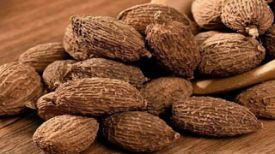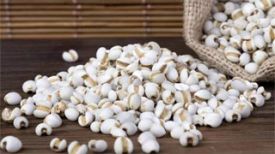Sea root vegetables, deer antler tips, Artemisia annua, seaweed vegetables, black cabbage, seaweed flowers.
2. Plant morphology
Sea Artemisia: Perennial brown algae, brown in color. The fixator is disc-shaped. The main trunk is cylindrical, solitary, and the small branches alternate with each other. After withering, conical marks remain on the main trunk. Single leaf, alternate, with significant changes in leaf shape. Primary leaves obovate or lanceolate, entire, with middle ribs; The secondary leaves are narrow and linear to lanceolate, with indistinct middle ribs. At the end of the small branches, there are often airbags, spherical in shape, and the reproductive support is arranged singly or in a raceme on the reproductive small branches. Yangqicai: fixed organ with false root shape. The leaf like protrusion is long and rod-shaped, with a shield shaped tip, sometimes swollen, and hollow into bubbles; Spindle shaped airbag.
3. Origin distribution
They all grow on rocks in areas where seawater surges below the low tide line. Mainly produced in Shandong, Liaoning and other regions.
4. Harvesting and processing
Harvest in summer and autumn, remove impurities, wash and sun dry.
5. Characteristics of medicinal herbs
Large leaved seaweed: curled and wrinkled, black brown, some covered with white frost, 30-60 centimeters long. The main trunk is cylindrical with conical protrusions. The main branch grows from both sides of the main trunk, while the lateral branch grows from the axils of the main branches and leaves, with short thorny protrusions. Primary leaves lanceolate or obovate, entire or coarsely serrated; Secondary leaves are linear or lanceolate, and there are small branches with strip-shaped leaves in the axils of the leaves. Airbags are black brown, spherical or oval in shape, some have a handle, the top is blunt and round, some have a thin and short tip, brittle in texture, and soft when moist; After being soaked in water, it swells and the meat becomes thick and sticky. It has a fishy smell and a slightly salty taste. Small leaved seaweed: smaller, 15-40 centimeters long. Branches alternate, without thorny protrusions. Leaf strip or slender spoon shaped, slightly swollen at the tip, hollow. Airbags are axillary, spindle shaped or spherical, with a longer stalk. The quality is relatively hard.
6. Nature, taste, and meridian tropism
Cold in nature, bitter and salty in taste. Guigan Meridian, Stomach Meridian, and Kidney Meridian.
7. Effect and function
Soft and firm, dispersing nodules, reducing phlegm, and promoting diuresis. A clearing heat phlegm medicine belonging to the sub category of phlegm resolving, cough relieving, and asthma relieving drugs.
8. Clinical applications
Dosage 6-12 grams. Boil in water, or soak in wine and put into powder. Used to treat gallstones, scrofula, testicular swelling and pain, phlegm and edema.
9. Pharmacological research
Can affect thyroid function, has liver and spleen contraction, and antibacterial effects; Has a significant antihypertensive effect; Has heparin like anticoagulant effect; Has a lipid-lowering effect, can significantly reduce serum cholesterol content, and alleviate arteriosclerosis; It can enhance the body's immune function and also has anti-tumor and anti infection effects.
10. Chemical composition
Contains ingredients such as alginate, crude protein, mannitol, ash, fat, mucus, fructose, fucose, brown algae starch (i.e. kelp starch), and polysaccharides from seaweed. In addition, extract an anticoagulant component that acts similarly to heparin.
11. Taboos for use
Patients with spleen and stomach deficiency and cold should not take it together with licorice.
12. Compatibility prescription
① Treatment of Gall Tumors: 240g of seaweed (washed with salted juice), 60g of Fritillaria, 0.6g of sweet potato roots, and 0.6g of wheat flour (stir fried). The four flavors are dispersed. A square inch dagger in wine, three days a day. (Cui's Seaweed Powder in "Outer Stage")
② Treating meat galls and stone galls: 3 grams each of seaweed, Fritillaria, Chenpi, Kunbu, Qingpi, Chuanxiong, Angelica sinensis, Pinellia ternata, Forsythia suspensa, Angelica dahurica, and licorice, and 1.5 grams each of kelp. Boiled in water. (Authentic Surgery: Seaweed Jade Pot Soup)
③ Treatment of liver meridian galls: 60g each of seaweed and kumbu, 120g of wheat (boiled and fried in vinegar), 60g of gentian grass. Above is the end. Refine honey into pills, and wutong are big. Take 20 to 30 pills each, take the white soup before lying down, and swallow it with water. (According to the Guidelines for Diagnosis and Treatment, seaweed soft and firm pills)
④ Treatment for hernia: 15 grams each of seaweed and cumin, and 30 grams of fennel. Boiled in water. (Chinese Journal of Medicinal Marine Organisms)
⑤ Treatment of proteinuria in nephritis: appropriate amounts of seaweed, cicada clothes, and kunbu each. Boiled in water. (Zhejiang Medicinal Flora)
⑥ Treating excess flesh on the body: If seaweed is used as a final application and still consumed with seaweed wine, remove it. (Pu Ji Fang)


